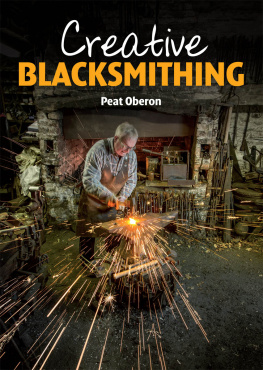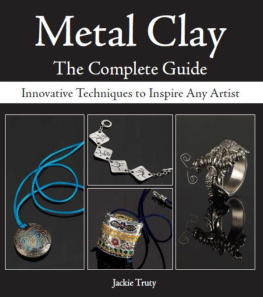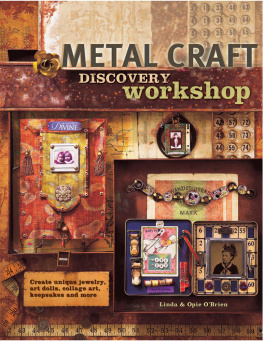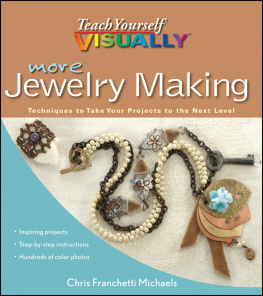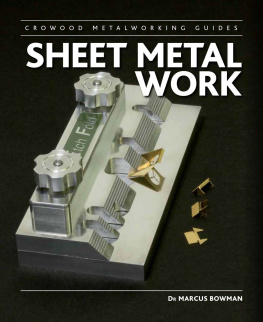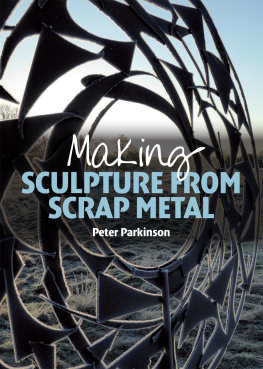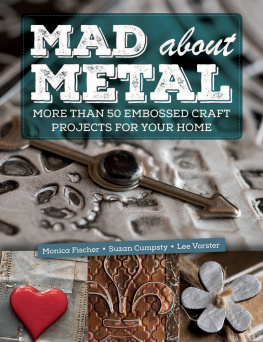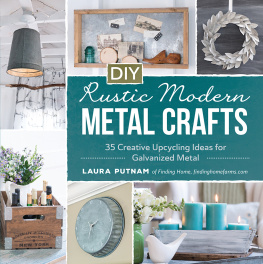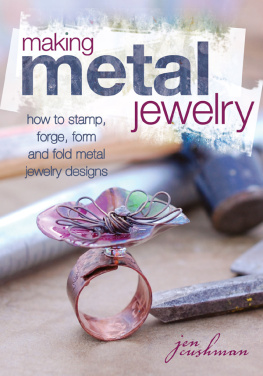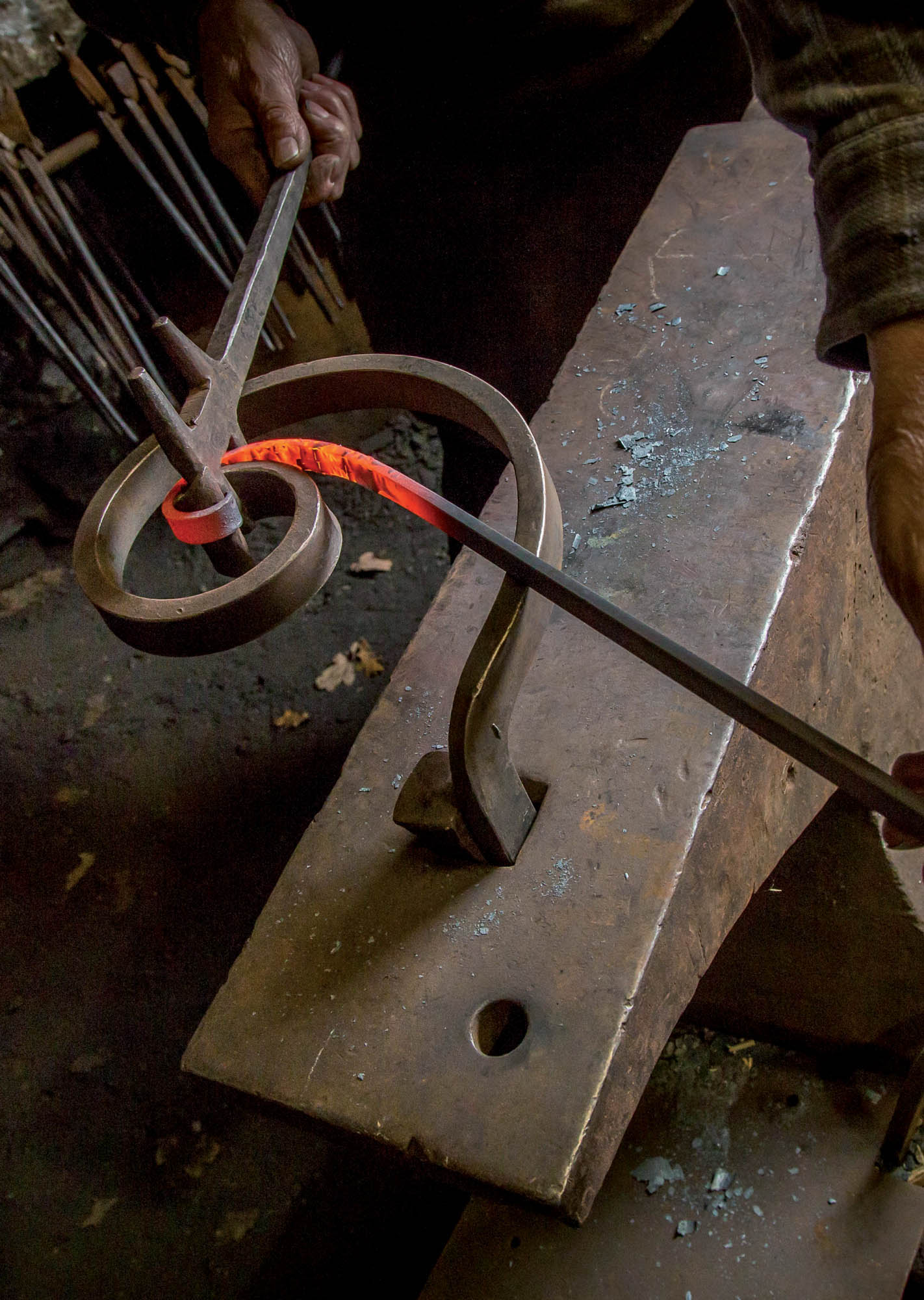



THE CROWOOD PRESS
First published in 2015 by
The Crowood Press Ltd
Ramsbury, Marlborough
Wiltshire SN8 2HR
www.crowood.com
This e-book first published in 2015
Peat Oberon 2015
All rights reserved. No part of this publication may be reproduced or transmitted in any form or by any means, electronic or mechanical, including photocopy, recording, or any information storage and retrieval system, without permission in writing from the publishers.
British Library Cataloguing-in-Publication Data
A catalogue record for this book is available from the British Library.
ISBN 978 1 78500 034 8
CONTENTS
INTRODUCTION
Blacksmithing is of one of the oldest crafts. People who want to develop these blacksmithing skills may come to it from a wide variety of other activities. You may already have the kit and want to do something less functional that allows you to express yourself creatively. You may be skilled in other creative crafts and want to expand your materials and skills repertoire to include blacksmithing. You may even have a project in mind and are intrigued by how forging is done. Rather than buying a ready-made product, or commissioning someone to make it for you, you may well become so fascinated that you want to do it yourself.
Unfortunately for would-be practitioners, blacksmithing is rather equipment-hungry. You will need something heavy and flat, preferably an anvil, upon which to hit the metal, and a hammer to hit it with. That is the way most smiths start out on their journey of exploration.
We will begin by learning about the anvil and using fire, especially managing the various techniques needed to control and manipulate the heat. Please note that the availability of fuel varies from place to place; this book refers to the use of coke, which is universally used in Britain, but coal and charcoal require different tech-niques.
In the course of time, as your knowledge, experience and skill accumulates, the need will arise for more and more tools. A selection of hammers for various tasks should be available for the smiths use. There are five types of tongs described in this book, and later, a chapter showing how to make your own tongs.
Almost uniquely in the world of making, smiths have the ability to make their own tools. Besides hammer and tongs, to perform any tasks except pure forge work, other tools must be available. These will be collected or made as progress demands. Hitherto, it has been assumed that the novice has had access to tools from elsewhere. However, if there is more than a passing interest, the blacksmith will need some personal tools, which do not need borrowing. During working, having the right tool handy to help the flow of the job will enhance a sense of achievement, and reduce frustration. Besides which, there is a lot of satisfaction to be had from working with your own homemade tools.
Basic techniques, such as drawing down, bending, marking out and splitting, will be explained, and you will be able to practise these and more advanced processes while working on various projects involving the introduction of skills of growing difficulty. In the first few chapters all of the instruction is about traditional ironwork, and the tools with which it is made. These are the building blocks, necessary to lay down before you can express your creativity.
In Britain, until recently there was a very stuffy attitude towards ironwork. Architectural styles changed, but to a large extent, ironwork lagged behind. Smiths themselves were not encouraged to experiment, and the paragon work of Jean Tijou (active circa 16901710) continued to be held in high esteem. There were exceptions, obviously, and some really innovative work was done in the late nineteenth and early twentieth centuries. After the Art Deco period, however, ironwork declined, and was dropped from architectural studies. Some of the good work from those periods was quite organic, and in we will demonstrate some of the techniques employed in its manufacture.
Whatever experience you bring to this book, and whatever you hope to achieve, it has been written for present-day craft explorers to enable everybody to unfold some of the mysteries of this fascinating, ancient craft.
CHAPTER ONE
GETTING STARTED
The anvil
The smiths most important piece of equipment is his anvil. In Britain, the most usual kind of anvil is the London Pattern. This shape evolved about 300 years ago, and has hardly been bettered. There are also Birmingham Pattern and Portsmouth Pattern anvils in use, as well as various other slightly different models.
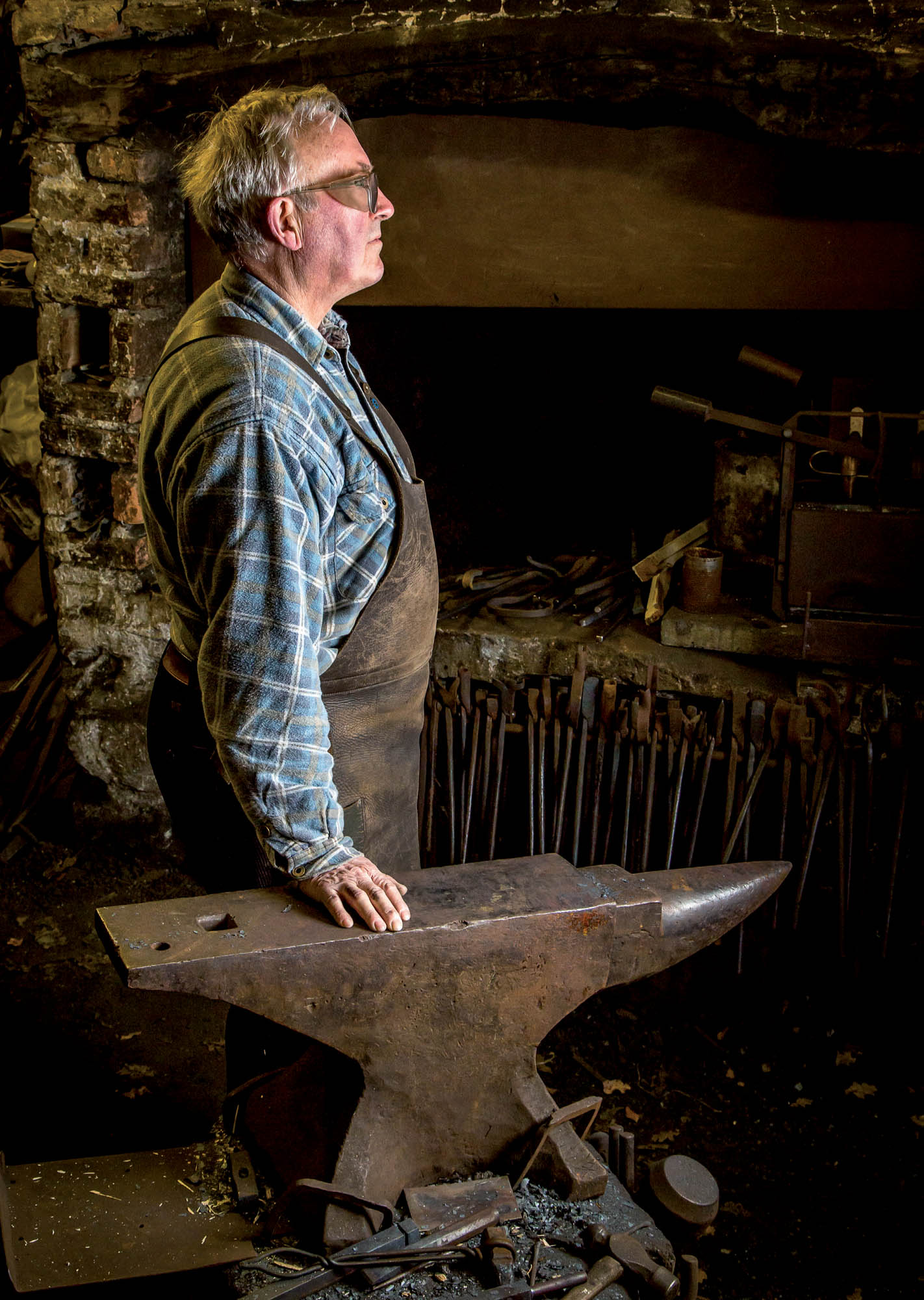
London Pattern anvil; the most popular shape used in Britain for 300 years. The height of the anvil should enable the smith to rest his hand upon the anvil while keeping the back straight.
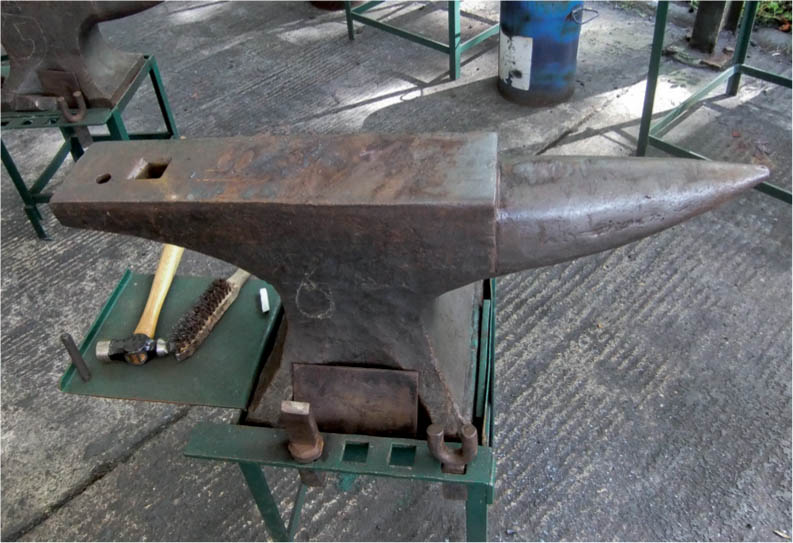
Birmingham Pattern anvil; similar to London, but missing the table.
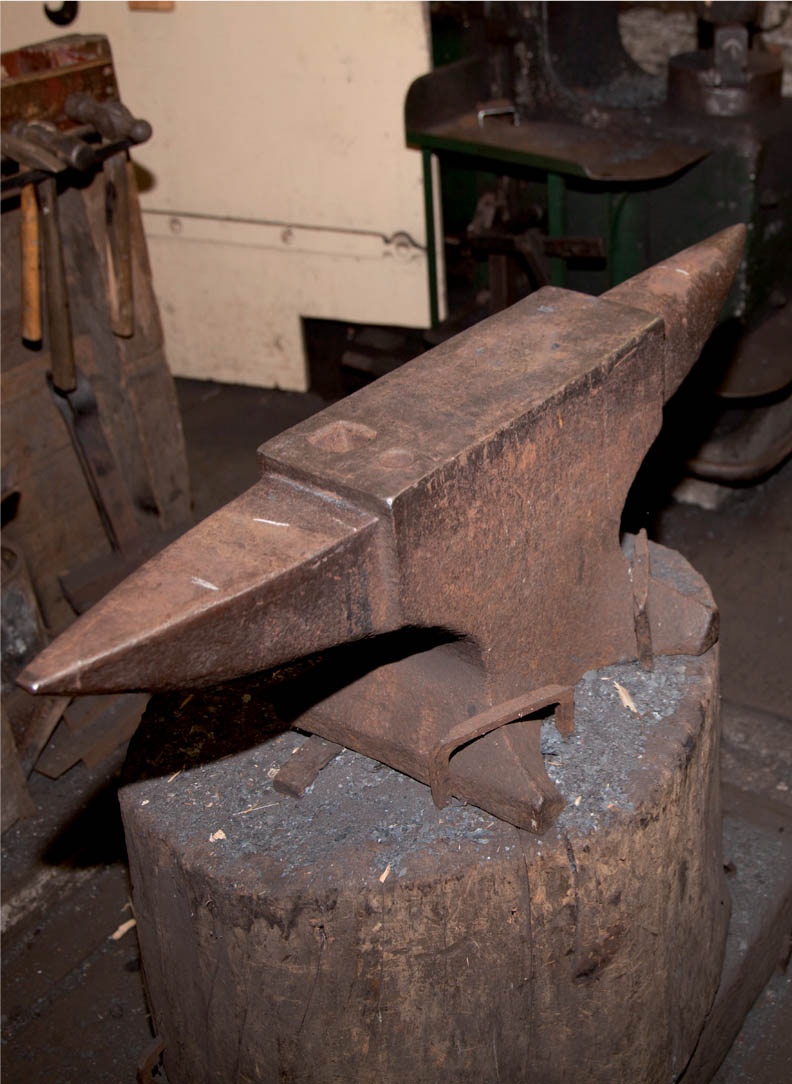
Portsmouth Pattern; similar to Birmingham, but with extra squared-off beak at other end.
Parts of the anvil
The beak, also called the bick, beck, pike, horn and other names, is the prominent characteristic of the anvil. Because of its tapering shape, it has an infinite number of radii, used in creating curves.
The square hole at the other end, the heel, of the anvil is called the hardie hole. It is so named after the cutting tool, which is the most frequently used anvil accessory. During a lifetime of working, a smith will invent and copy innumerable square-shanked tools to be secured in that hole.
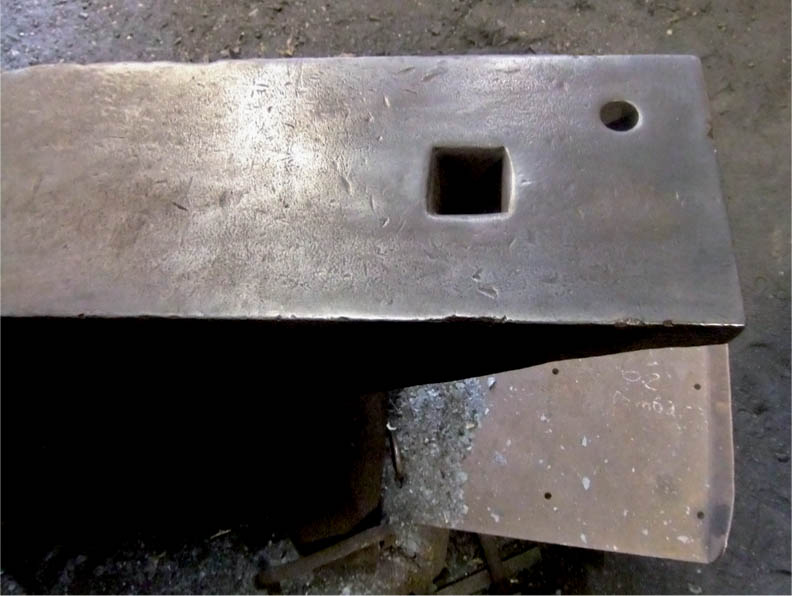
Heel end of London anvil, showing hardie hole and pritchel hole.
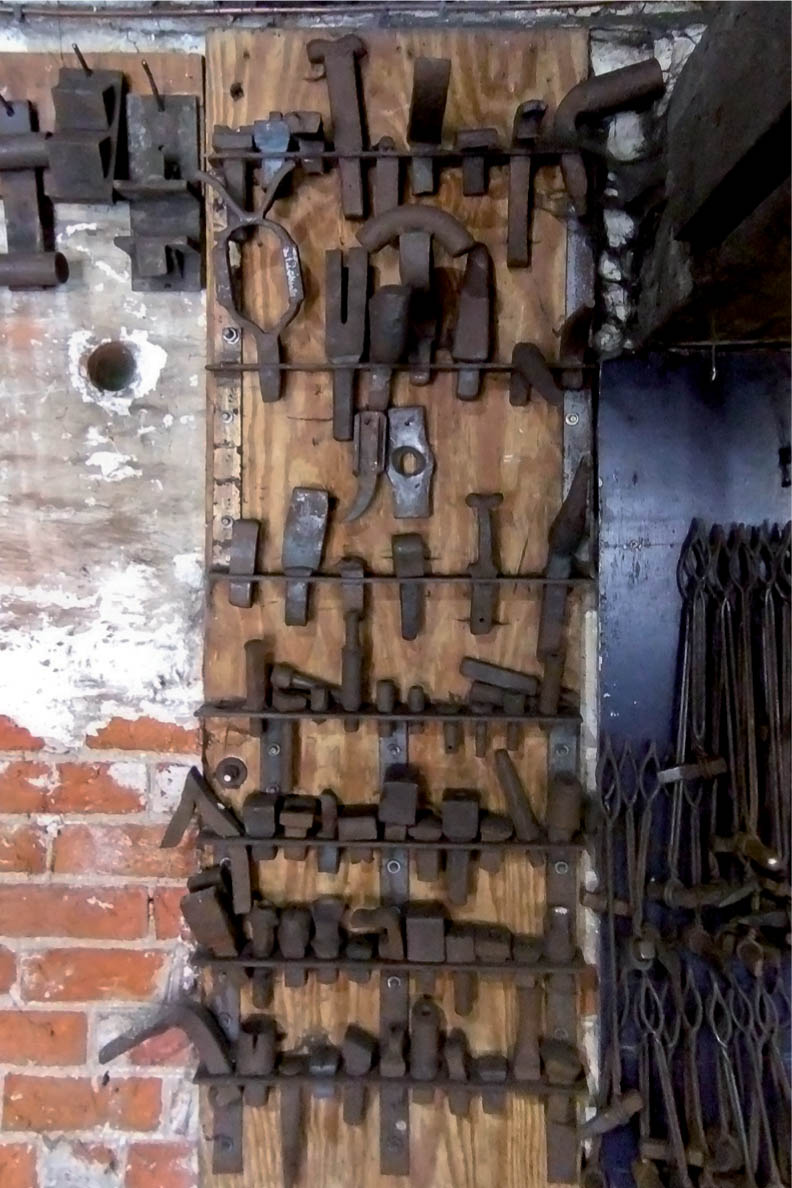
Selection of tools for hardie and pritchel holes, where they can be seen.
Beside the hardie hole, there is another, smaller, round hole called the punch hole, or pritchel hole. This is used to support flat material when punching through the metal; because of its malleability, the material around the hole would otherwise be forced down around the hole and need re-flattening.
The face of the anvil is hardened. Even though the metal is hot and soft when it is being hit, the face needs to be hard wearing. Until the nineteenth century, anvils were made of wrought iron, and the face, of hard steel, was fire-welded on. After time in use, the body of the anvil would slightly compress at the left, most-used part of the face, and it would hollow. Forged (wrought iron) anvils have holes under the beak and heel where the huge tongs were deployed in placing the anvil in and out of the fire during manufacture. Present day anvils are usually cast steel, and have no holes. They do not hollow so much.
Next page
